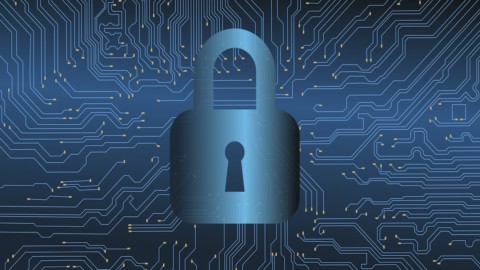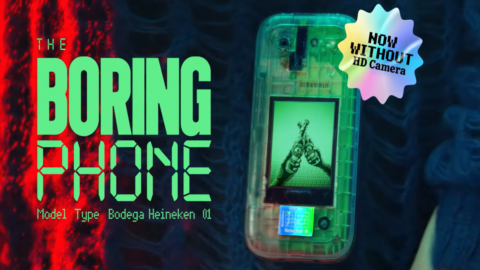Innovative technologies have become a key element of the daily life of Italians, changing their way of life, in line with the main Western and European countries. This is evident above all if the habits and choices of our compatriots are compared with the general European trend. Research Connected Consumer of Mastercard, conducted by GFK Eurisko, highlights the approach of Italian and continental consumers to digital payments and, more generally, to technologies and innovation in everyday life.
- Italian Primi in Europe for purchases via smartphone
Italians prove to be among the most likely to use the smartphone for their purchases: almost half (47%) prefer the smartphone as a tool for their daily purchases exceeding the average of European citizens (whose figure stops at 33%). Analyzing how devices are used, 38% of Italians - 33% of Europeans - use them to purchase consumer goods, including tickets and services, living their daily lives in an increasingly smart way. Furthermore, almost half of Italians (47%) believe mobile payments are the simplest solution, with a European average of 31%. Well over half (53%) consider it the fastest solution (vs. 35% for Europe) and also use it to optimize their expenses, looking for the best offer (51% for Italy and 39% for Europe).
They will be right mobile payments to have the greatest impact on our daily lives in the coming years. The study shows that the 60% of Italians consider them as the solution that will significantly impact their e-commerce experience, followed by smart home technologies (41%) and wearable devices (30%). The Italian data is almost in line with the European one on using the smartphone to make banking transactions, bill payments, money transfers: on a continental level it comes to the 29%, nationwide at the 28%. Finally, the 14% (Italy data) chooses to finalize a payment in the physical store via mobile (11% Europe)1.
“The data that emerges from our research offer us a clear picture of the Italian connected consumer in 2018: inclined to innovations and satisfied with the new user experiences for everyday life and free time” he says Michele Centemero, Country Manager Mastercard Italy “The Connected Consumer research data that we present confirm a very positive trend, evidence of how the development of innovative solutions is well accepted in our country, because they make consumers' lives smarter, not only in payments but also in the way they use transport and services, in metropolitan areas”.
Italian consumers in 2018 have trust in technology
The innovative technologies made available to Italian consumers are well received and appreciated, and the trend shows more than positive and constantly growing data. I34% of Italians respondents believes that innovation is useful for finding suitable solutions forthe needs of the newspaper (data similar to that of European citizens, which stands at 32%). According to the survey, the innovation is synonymous with simplification for the 31% is Italians chand of the Europeans need speeding up (27% for our compatriots vs 34% of the continentals). Many consumers believe that technology can also help to improve their physical well-being and not only (according to 29% of Europeans and 24% of Italian respondents), since the use of technological products has certainly led import anti benefits about our time (for 53% of our compatriots, in fact, it helps not to waste it, given that it stands at 51% for Europeans) and our stress level, which decreases thanks to their use (45% Italy vs. 40% EU).
The search for subsidies and aids that simplify daily activities are increasingly appreciated, they say 7 out of 10 Italians (70% vs 67% Europeans). And this need for simplification is associated with the desire to have more time available for oneself than money (45% vs 43%), money that they would gladly invest in the purchase of products that make life less complicated (56% of Italians and 57% of continentals)2.
Italy vs Europe trends on mobile technology (note: add any other insights)
- According to the research, 53% of those interviewed in Italy and 42% in Europe used their mobile device to search for information on sporting events, concerts and cinemas, figures that rise dramatically on both scenarios as regards the use of maps ( three quarters of our compatriots and 59% of continentals).
- We are always connected, that's a fact. And the research also signals the trend ofalways on as dominant, in Italy (60% say it is important to always be online and "traceable") and in Europe (50%).
In Italy like in world the technological impact is more and more theeminent
The research Connected Consumer endlessly compares Italian data with an average of the main global markets (Brazil, Germany, Japan, Great Britain, United States, China, South Korea). If we take into consideration what is also happening outside Europe, it is more than evident that the impact of technology on our lives is increasingly influential and "fundamental". THE payments via mobile devices, According to 60% of Italians e 55% of the interviewees worldwide, will have a decisive impact on our future. It will also happen with technology that makes more money smart our homes (41% Italy vs 50% global), with wearable devices (30% Italy vs 35% worldwide), with 3D printing (which for us Italians has less influence than the global figure, 30% vs 41% ) and with autonomous driving (national data at 28% and worldwide at 33%)3.
Roma like Milan on technological habits and on payments smart
Going into the data relating to Italy alone, according to the study Mastercard, it is noted that the two main metropolises, Milano e Roma, are converging on technological trends. I Milanese are the most technological consumers in Italy and the most connected, slightly above the Romans: il 26% of them declared that new technologies are indispensable in everyday life, against the 20% of the Romans. The two cities they are very similar on many topical concerning the approach to new technologies: 74% of Milanese use their smartphone to search for information, against 72% of Roman citizens (against a national average of 61%); in Milan 31% made payments contactless (10% via smartphone), the Romans outnumber them by measure (32% - 11% via mobile), data far higher than the national average of 20% (of which 6% with smartphone).
"Milan and Rome are proving to be at the forefront in recent years, demonstrating the fact that the acceptance of technological innovations by our fellow citizens is increasingly strong, with a view to simplifying the daily life that is now before our eyes and within everyone's reach." concludes Michael Centemero.
The main trends Milan vs Rome
Smartphone usage priorities vary between the two cities: if a Milano it is the most used device for taking pictures and shoot videos (75%), in Rome 76% choose it for communicate with friends. The differences can also be seen in other activities: in Milan communication with friends stands at 70%, followed by viewing e-mails (60%) and social pages (56%), using maps (56%), accessing to banking services (30%) and reading the news (30%). In Rome, on the other hand, smartphones are mainly used to consult social networks (67%), send and read e-mails (62%), capture an image (60%), consult maps (44%), home banking (32%) and reading news online (24%).
It is clear that the use of technological supports brings benefits in everyday life: 61% of Romans say they are willing to pay more for products that make life easier, a figure slightly higher than in Milan (59%), against an average 53% Italian. This despite some stating that they still encounter some difficulties in using new technologies (24% Milanese vs 20% Romans).
Milanese and Romans are increasingly choosing more than frequent to use online platforms also for their own purchases, with percentages far higher than the national average. They mainly buy i train or plane tickets (25% Milan vs 19% Rome vs 13% Italy), holidays (17% for Milan versus 12% for Rome and a national average of 11%) or to book a hotel (15% for the Milanese vs 13% of the Capitoline and 9% of Italy).




